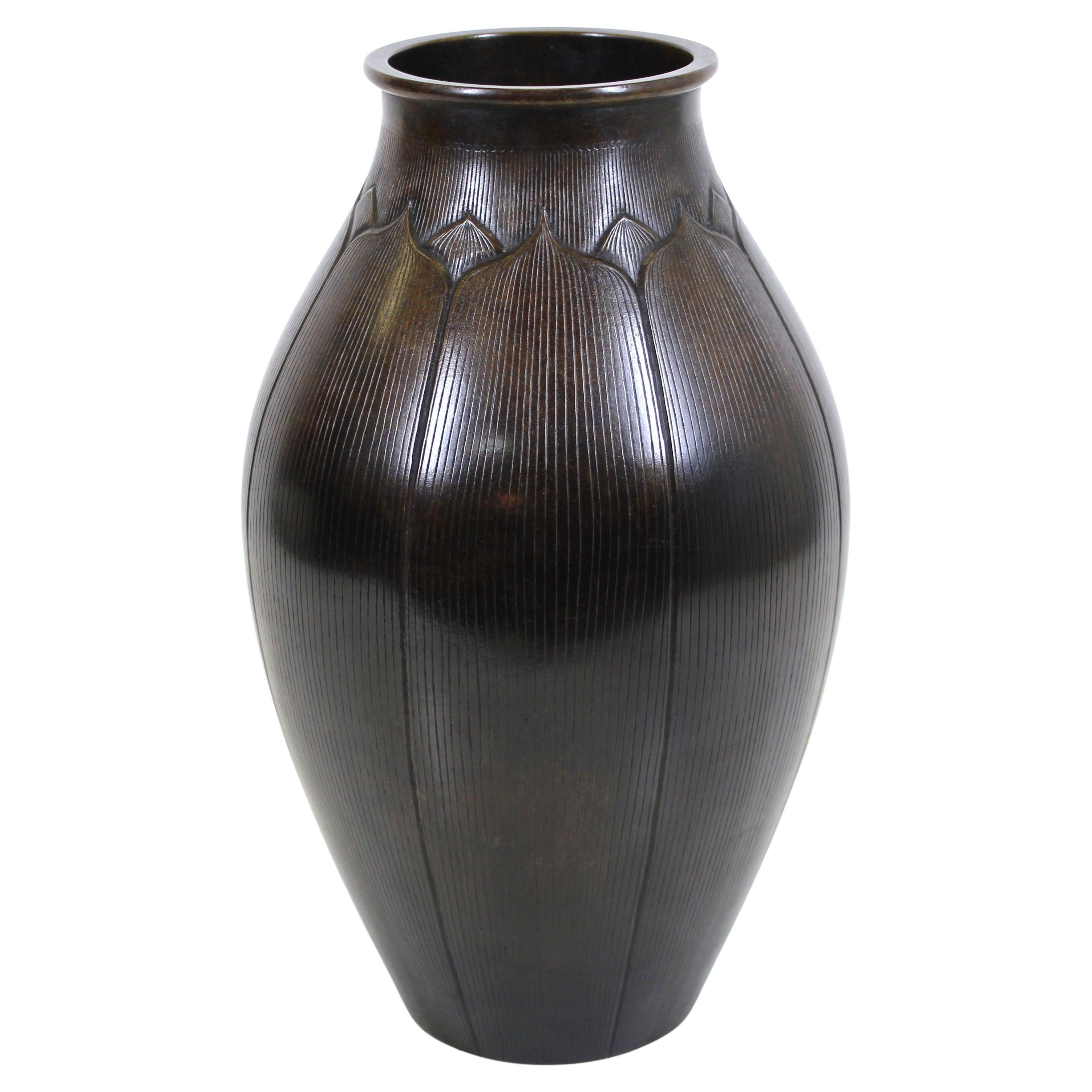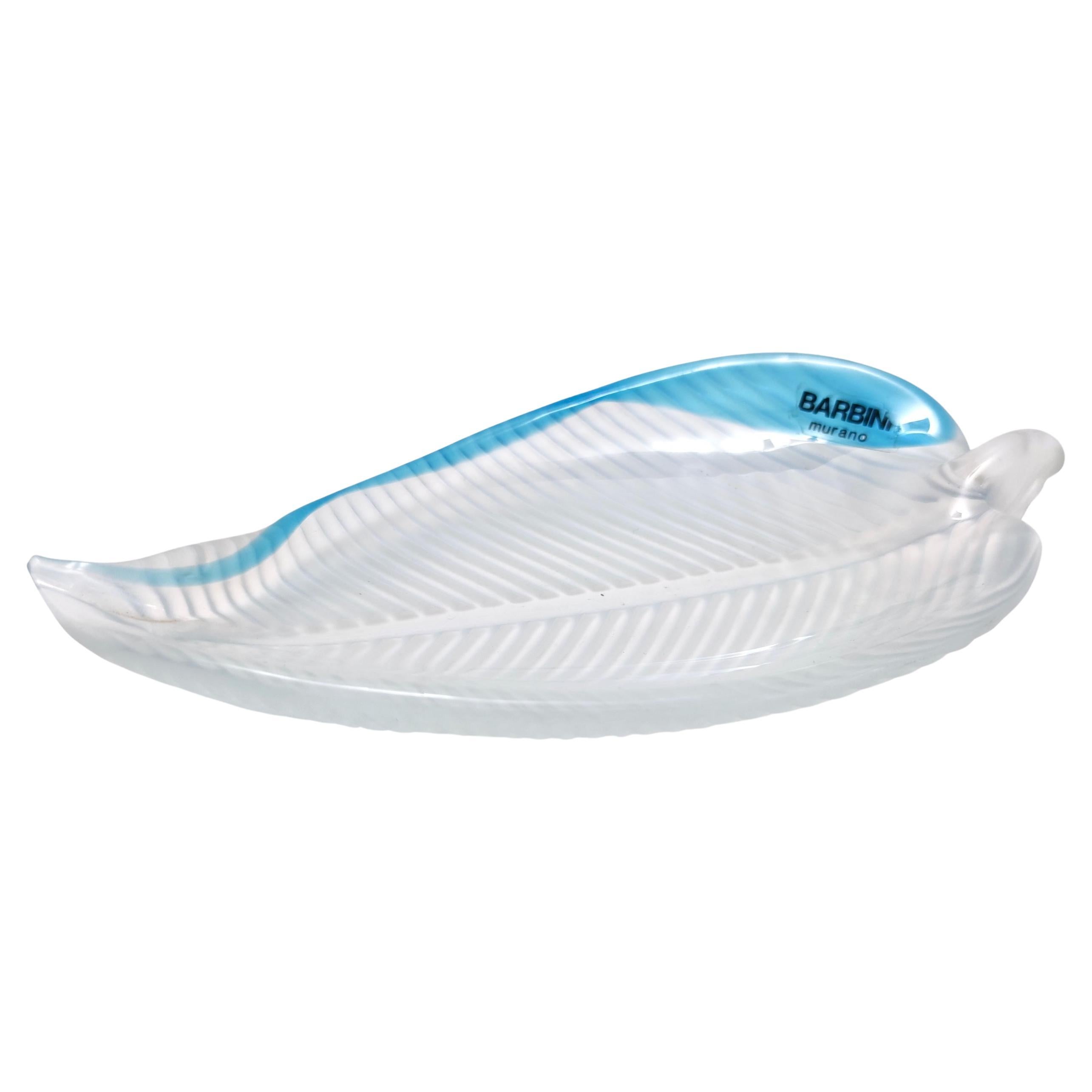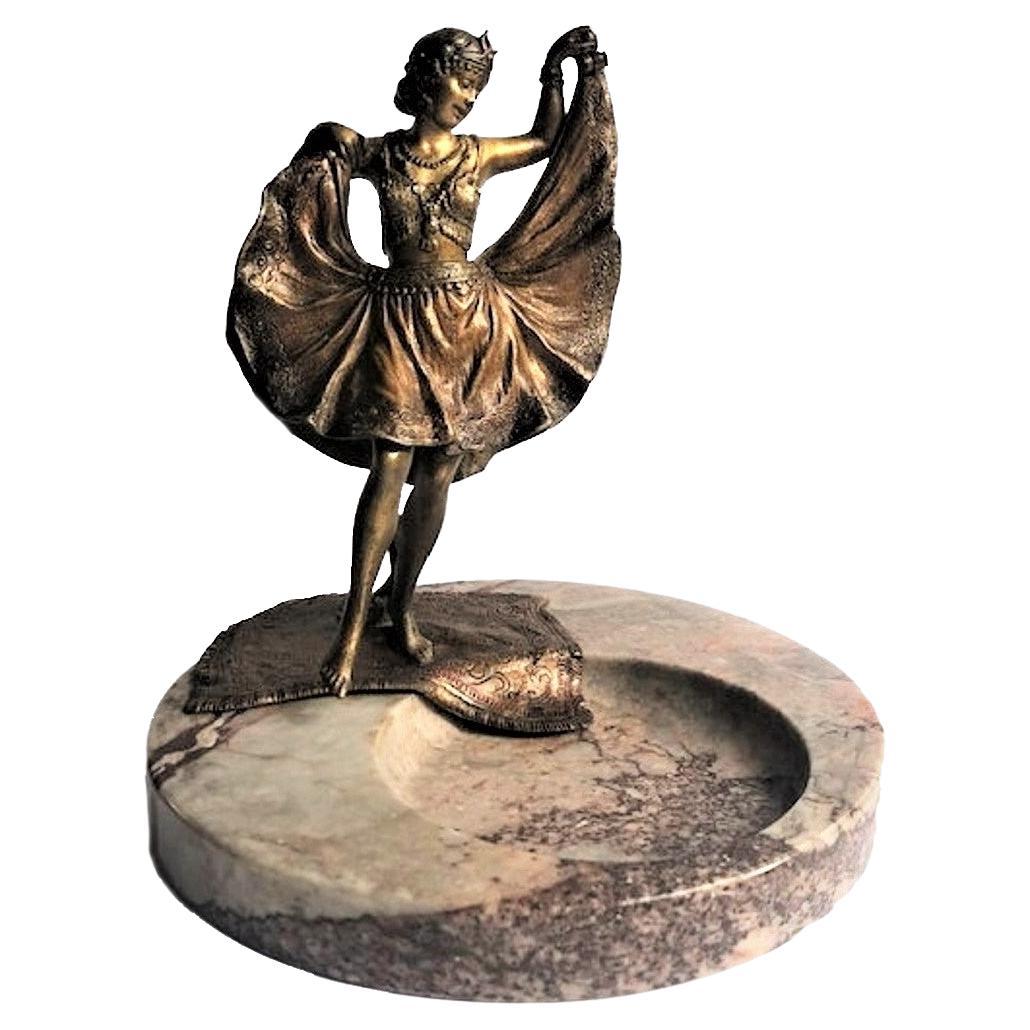Items Similar to Japanese Meiji Era Bronze Lotus Leaf Bowl, Vide Poche, ca. 1900
Want more images or videos?
Request additional images or videos from the seller
1 of 8
Japanese Meiji Era Bronze Lotus Leaf Bowl, Vide Poche, ca. 1900
About the Item
DIMENSIONS: Height: 4 inches Width: 6 inches Depth: 6 inches
ABOUT THE OBJECT
With the laconic Japanese-style Art Nouveau design, filled with symbolism and metaphorism, this multi-use bowl (perfect as vide poche) is made of dark brown-patinated bronze, and represents a lotus flower slightly rising above the level of the table on a coiled stem. At the bottom of the stem an unripe cocoon of a silkworm butterfly nestled comfortably. A small graceful frog adorns the top of the flower.
ABOUT MEIJI PERIOD
The Meiji period (????, Meiji-jidai), also known as the Meiji Era, is a; Japanese era which extended from September 8, 1868 through July 30, 1912.
- Dimensions:Height: 4 in (10.16 cm)Width: 6 in (15.24 cm)Depth: 7 in (17.78 cm)
- Style:Art Nouveau (Of the Period)
- Materials and Techniques:Bronze,Patinated
- Place of Origin:
- Period:1900-1909
- Date of Manufacture:circa 1900
- Condition:Wear consistent with age and use. We make our best effort to provide a fair and descriptive condition report. Please examine photos attentively, as they are an integral part of the description. Send us a message to request more details or discuss price.
- Seller Location:New York, NY
- Reference Number:1stDibs: LU2819330231572
About the Seller
5.0
Vetted Seller
These experienced sellers undergo a comprehensive evaluation by our team of in-house experts.
Established in 1993
1stDibs seller since 2017
68 sales on 1stDibs
Typical response time: 2 hours
- ShippingRetrieving quote...Ships From: New York, NY
- Return PolicyA return for this item may be initiated within 10 days of delivery.
More From This SellerView All
- Japanese Art Nouveau Meiji Period Patinated Bronze Vase, circa 1900Located in New York, NYAlthough unmarked, this rare and important, grand but at the same exquisite patinated bronze vase has just a very few little details, defying the shape of the handles, as well as the...Category
Antique Early 1900s Japanese Art Nouveau Vases
MaterialsBronze
- Franz Bergmann, Viennese Bronze & Marble Erotic Sculptural Vide Poche, ca. 1900By Franz BergmannLocated in New York, NYDimensions: Height (w/ skirt down): 6.75 inches (17cm). Height (w/ skirt up): 8.5 inches (21.25 cm). Diameter of marble base: 6.25 inches (15.63 cm). ...Category
Antique Early 1900s Austrian Art Nouveau More Desk Accessories
MaterialsBronze
- Japanese Kyoto Fuzan Satsuma Ware Double-Handled Vase, Meiji Period, ca. 1900Located in New York, NYThis beautiful end of Meiji Period Japanese Kyoto Fuzan Satsuma Ware double-handled vase has a gold plated intricate infinite circular relief pattern design and two images of goddess...Category
Antique Early 1900s Japanese Taisho Vases
MaterialsPorcelain
- Pair of Japanese Patinated Bronze Candelabras, Meiji Period, ca. 1900Located in New York, NYThis most unusual pair of original 18th century Japanese patinated bronze candelabras, uniquely designed as branches of mountain flowers entangled by a dragon, are mounted on the con...Category
Antique Late 19th Century Japanese Japonisme Candelabras
MaterialsBronze
- French Art Nouveau Patinated Bronze Sculptural Iris Vase, ca. 1900Located in New York, NYABOUT IRIS The iris is a special and mysterious flower. Not only because of its striking appearance, but also from an artistic and historical point of view. It is also like a work of art, as though created by Mother Nature. The unique leaves of this plant not only create wonderful shadow casts, but also look as if they were painted by hand. It's no wonder that iris acts as the muse for countless artists, and can be seen in many famous works of art. The iris was first spotted in the time of Pharaoh Thutmose, in 1504 BC. He had the iris inscribed into the wall reliefs of a temple as a sign of his power, as well as decorating his sceptre with motifs of the flower. Since then, the iris has been a symbol of victory in Egypt. But the symbolism of the iris goes further than that. In Japan, the flower represents courage and is the symbol of the boys' festival. In Islamic cultures, the iris is a symbol of prosperity. In Europe, the flower was a popular weapon symbol in the Middle Ages and stood for chivalry. And in Christianity, the iris was seen as a symbol of the trinity because of its three-part flowers. With more than 300 varieties, the iris is now the most popular flower among growers and gardeners following the rose. Countless artists use the iris in their works and the flower is present in all eras. You can see the flower on furniture, vases, jewelry, fabrics, sculptures, coats of arms and much more. Did you know that the iris is also called the sword lily? It's not a coincidence that it used to symbolize physical and emotional pain and suffering caused by a weapon. We also see the flower in religious art, where it's often associated with Mary and Jesus. The iris is also associated with the Greek goddess Iris, where the flower symbolizes reconciliation and divine messages. This is also reflected in many paintings. Finally, the iris is also visible in Dutch and Flemish still-life paintings. This can be in a religious form, incorporated into an object or as a decorative flower. In the Art Nouveau art movement, the iris (along with other plants, such as the birch) was often used as an expression of feminine beauty. With its almost otherworldly appearance, the iris is perfectly suited to the Art Nouveau aesthetic and is featured in many well-known works of art. The poet of that era, Hermann Hesse...Category
Antique Early 1900s French Art Nouveau Planters, Cachepots and Jardinières
MaterialsBronze
- Japanese Art Nouveau Awaji Ware Art Studio Pottery Flower Vase, ca. 1900sLocated in New York, NYJapanese Art Nouveau Flower Vase Awaji Ware Art Studio Pottery ca. 1900s ABOUT AWAJI WARE ART STUDIO POTTERY Awaji pottery was made on the Japanese island of the same name between...Category
Antique Early 1900s Japanese Art Nouveau Vases
MaterialsPottery
You May Also Like
- Japanese Meiji Art Nouveau Bronze Lotus VaseLocated in New York, NYJapanese Meiji period Art Nouveau bronze vase in shape of a lotus, hand incised detailing and rare chocolate brown patina, circa 1900.Category
Antique Early 1900s Japanese Meiji Metalwork
MaterialsBronze
- Postmodern Murano Glass Leaf Trinket Bowl / VIde-Poche by Alfredo Barbini, ItalyBy Alfredo BarbiniLocated in Bresso, LombardyMade in Italy, 1970s. This trinket bowl / vide-poche is designed by Alfredo Barbini and it is made in light blue and transparent Murano glass with lines obtained from a mold and then...Category
Vintage 1970s Italian Post-Modern Bottles
MaterialsMurano Glass
- French Metallic Glaze Ceramic Bowl or Vide PocheLocated in Miami, FLBeautiful mid-20th Century French metallic glaze bowl or vide poche possibly from Vallauris or Biot, France. The prominent colors in an art brut form make this metallic glaze bowl or...Category
20th Century French Mid-Century Modern Vases
MaterialsCeramic
- Late Meiji Era Brass Japanese Dragon Cloisonné VaseLocated in Van Nuys, CAPost War Brass Japanese Dragon Cloisonné Vase with scenic of a dragon flying through the sky. Crica 1900 dimensions are 4.25" inches in heightCategory
Antique Early 1900s Japanese Vases
MaterialsBrass
- Antique Meiji Era Japanese Cloisonne Enamel VaseLocated in New York, NYAn antique Japanese Meiji Era brass and enamel vase, circa: early 20th century. The baluster form vase is enameled with polychrome images of blossoming flowers and plants and birds made in the Cloisonne technique on a black ground. The border of the base is decorated with a traditional Greek...Category
Early 20th Century Japanese Vases
MaterialsEnamel
- Japanese Meiji Era Goldstone Enamel Censer KoroLocated in New York, NYAn antique Japanese Meiji Era tripod enamel metal censer koro. Circa: late 19th century. The sphere form ware is enameled with polychrome medallions with blossoming flowers and butte...Category
Antique Late 19th Century Japanese Meiji Jars
MaterialsEnamel
Recently Viewed
View AllMore Ways To Browse
Brown Leaf Vase
Flower Vase Bowl
Japanese Bronze Vessel
Lotus Vase
Bowl With Flower Vase
1900 Japanese Vase
Vases From Meiji Period
Bronze Vase Japan Meiji
Bronze Vase Japanese Meiji
Meiji Bronze Vase
Meiji Era Vase
Japanese Meiji Bronze Vase
Bronze Vase Meiji Period
Japanese Bronze Vase Meiji Period
Lotus Flower Vase
Japanese Meiji Bowl
Lotus Vessel
Butterfly Bowl





